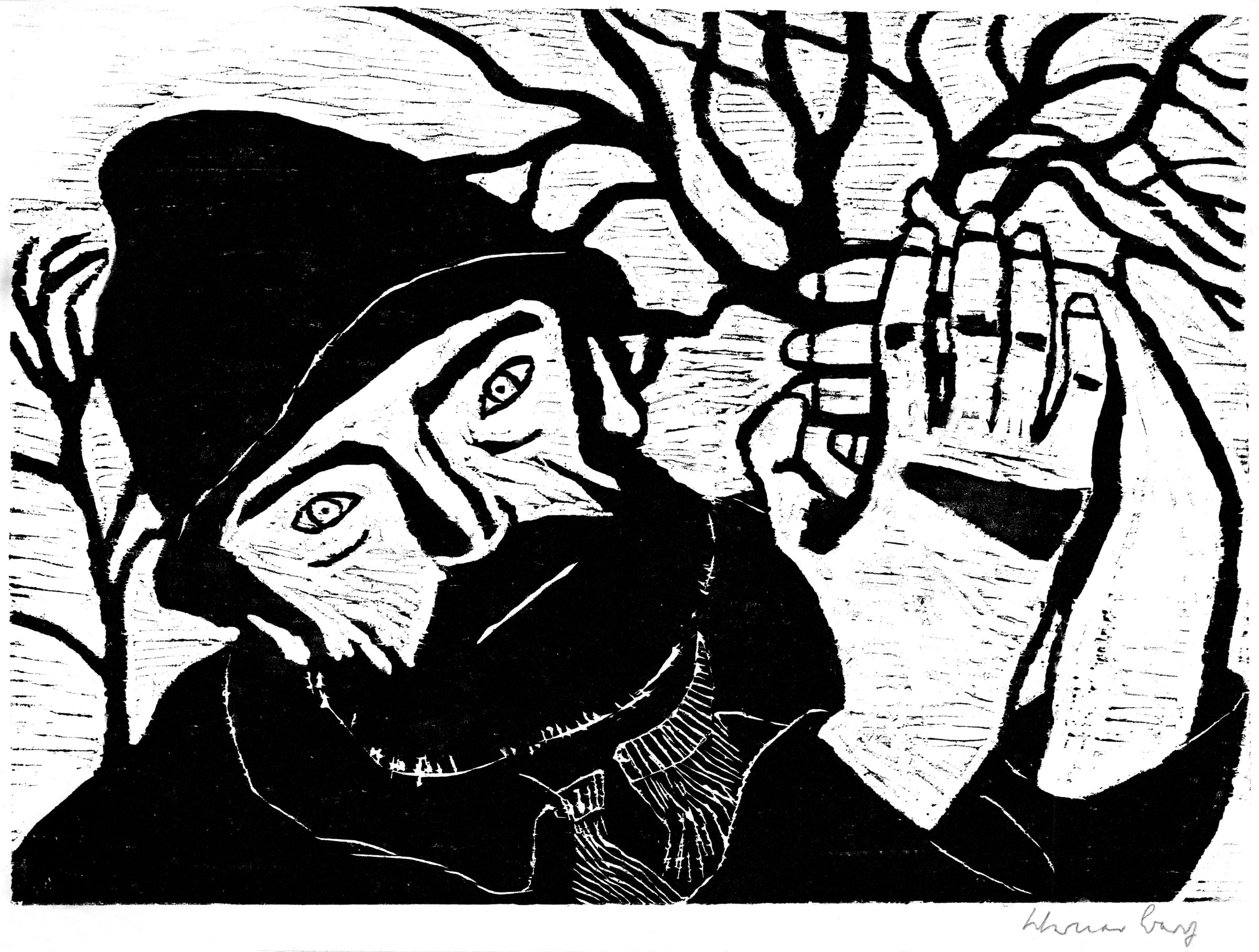The Deaf-Mute

The Deaf-Mute is dominated by the figure’s unity with its surroundings. The tree branches find their formal counterpart in the lines of the hands and in the eyebrows, nose, facial wrinkles, beard and ears, whereby each element seemingly emerges from the other without clear lines of division.
The work’s aim is to communicate the simple human being’s essence using means of depiction that are just as simple. An abbreviated white line is the sole indication of the mute mouth, while the gesturing hands represent the man’s link to the world.
The means by which the protagonists of Werner Berg’s art communicate is primarily their facial expression. Even though Berg’s use of gesture is often drastic, it plays a subordinate role in his work due to the tight framing of the figure within the image. Here parallels to the photography of the interwar period can be recognized. Generally the figures are staged in a shallow space, with their potential for movement being minimized by the rectangle within which the image is set. The radical cut robs them of their breathing space; it allows only the comportment or activity that is captured in the instant. By means of this visual grammar, Berg fixes their action’s inevitability and the lack of alternatives, inasmuch as any action is shown at all. When the figures display no action, there is no recognizable exterior force that can be seen to hinder them. Their speech is a special case: beyond remaining silent there is only speechlessness. They articulate their intention to communicate through their position in the extreme foreground, compensating for their renunciation of speech by switching to the medium of facial expression.